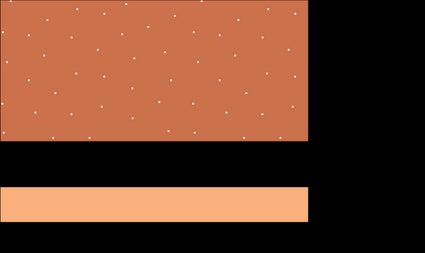Pleated Skirt Calculator
If you love making your own unique clothes and you're wondering how to make a pleated skirt, this pleated skirt calculator is just for you! This tool doubles as a fabric calculator and is, therefore, perfect if you want to figure out the exact amount of fabric you will need for your DIY pleated skirt. Use it to make sure you purchase the correct amount of material for your project, so that you may enjoy your hobby without having to worry about any tedious calculations.
Are you also making a cool jacket to match? Our jacket size calculator is here to help!
How to use the pleated skirt calculator

To many hobbyist dressmakers, the worst part of making clothes is calculating the amount of fabric needed. Luckily, this fabric calculator does all the maths for you. To use the DIY pleated skirt calculator, follow this short set of instructions:
-
Input your waist measurement and the seam allowance into the calculator. These two values are needed to calculate the amount of fabric for both the skirt and the skirt band.
-
Choose the pleat type you want to use on your skirt and type in the number of pleats you want your skirt to have. You will get the total width of the fabric rectangle you need to buy and the width of the fabric needed to make a single pleat.


- Next, input your desired skirt length and the width of the bottom hem. This will give you the length of the fabric rectangle you need to buy.
- In the third section of the pleated skirt calculator, put in the desired width of the waistband to get the width of the fabric rectangle for the waistband.
Finished that beautiful skirt? Keep your sewing skills busy with our dress size calculator and jeans size calculator!
- Lastly, put in the extra for overlap (typically about an inch (roughly three centimeters)) to get the width of the fabric rectangle.
Equations used in the pleated skirt calculator
If you want to do the maths yourself, here's a list of equations used by the pleated skirt calculator. Use them to learn how to make a pleated skirt.
- For knife pleats:
Fabric width for one pleat = (waist measurement / number of pleats) * 2
Skirt fabric width = (fabric for one pleat * number of pleats) + seam allowance
- For box pleats:
Fabric width for one pleat = (waist measurement / number of pleats) * 3
Skirt fabric width = (fabric for one pleat * number of pleats) + seam allowance
- For both types of pleats:
Skirt fabric for skirt length = desired skirt length + bottom hem + seam allowance
Waistband fabric length = (desired waistband length * 2) + (seam allowance * 2)
Waistband fabric width = waist measurement + overlap extra + (seam allowace * 2)
Use our length converter to ensure you get the length units right every time.
Why make a pleated skirt on your own?
Wondering why making your DIY pleated skirt is a good idea? After all, they are easily accessible in clothing stores. While that may be true, there are a number of reasons why learning how to make a pleated skirt on your own and implementing this knowledge is a great idea.
-
It's a terrific hobby. Making your own clothes can be a great way to spend your free time.
-
It can help you meet interesting people. Making your own clothes is very popular, and you should be able to find active community of like-minded individuals. There are many groups and forums all over the Internet, and you are very likely to find a club for clothes makers in your area.
-
It's satisfying. Learning how to make a pleated skirt on your own (or anything else, really) requires gaining a lot of skills and knowledge. Becoming good at something new is bound to give you a lot of satisfaction.
-
It lets you wear clothes that are truly one-of-a-kind. If you know how to make a pleated skirt and use this knowledge, you can be sure you will never run into someone dressed the same as you. You will never have to worry about outfit doubles at parties!
If you're new to making DIY clothes, you might consider starting with something a little easier, e.g., you may draw inspiration from Omni's circle skirt calculator. Once you get the hang of it, you can move on to creating your own DIY pleated skirt!
A short history of the pleated skirt
Pleating is a technique that has been in fashion for millennia, dating as far back as ancient Egypt. Ancient Egyptians used to pour eggs over linen and fry them in sunlight in order to bend the fabric in a way that allowed them to make pleats. A similar technique was used in ancient Greece. In both these cases, the process of pleating was costly and time-consuming. Even worse, it was not permanent - after washing the fabric it would reform back into its original shape, and the pleats would have to be redone from scratch. As such, only those of the highest status could afford to wear pleated clothes, which turned pleating into a symbol of status.

Therefore, pleating was associated with royalty for many centuries afterward. One great example of its importance was the infamous Ruff - the pleated collar worn by Queen Elizabeth in the 16th century. Scottish clans also used it on their kilts.

Nowadays, pleating is widely available and popular throughout the world. Ever since sewing machines replaced time-consuming handiwork, creating a pleated skirt has become relatively easy, and most pleated skirts available in stores are machine made. Naturally, it is possible to buy a handmade pleated skirt, but they are generally much more expensive.
